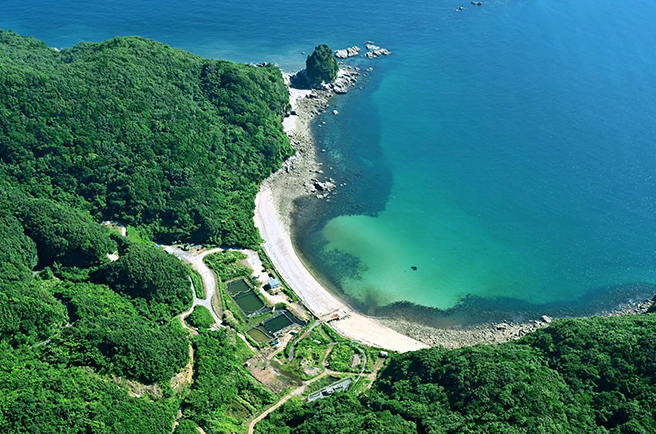
Nishi said the plans call for the facility to be jointly operated by Chugoku Electric and Kansai Electric Power Co.
“I will handle this issue while respecting the wishes of the town assembly,” he said afterward.
The officials explained that a study must first be made to determine if the conditions are suitable for a storage facility. This will involve boring into the bedrock.
At an Aug. 2 news conference, Satoshi Osedo, a managing executive officer with Chugoku Electric, said the project would be conducted jointly with Kansai Electric because the scale of the project and economic feasibility made it prohibitive for a single company to carry out.
The only facility outside of a nuclear power plant that could temporarily store spent nuclear fuel is in faraway Mutsu, Aomori Prefecture, in northern Japan.
Regional power companies across Japan are struggling to secure facilities to store their spent nuclear fuel because facilities within their own complexes are filling up.
The matter is especially pressing for Kansai Electric because it promised the Fukui prefectural government it would secure a site to build a storage facility outside of the prefecture for spent nuclear fuel.
Kansai Electric operates three nuclear power plants in Fukui.
Its pledge came as it lobbied the prefectural government to agree to a resumption of operations at the nuclear plants, including one in Takahama.
Some Kaminoseki town assembly members are eager for the interim storage facility to be built because construction would bring in central government subsidies to the town that has been losing population.
Around 40 years ago, Chugoku Electric pitched plans to build a nuclear power plant in Kaminoseki, and preliminary work on the proposed site began in April 2009. But all construction work has ground to a halt since the 2011 triple meltdown at the Fukushima No. 1 nuclear power plant.
The town has already received around 7.6 billion yen ($53 million) in government subsidies for the proposed nuclear plant, according to Kaminoseki officials. But there has been almost no increase in the amounts since the suspension of construction work. In the current fiscal year, the town received about 80 million yen.
Kaminoseki now has a population of 2,310, about one-third of the figure at the time the nuclear plant plan was first mooted.
“If nothing is done, the town will cease to exist,” said one town assembly member who favors building the interim storage facility.
However, many residents remain bitterly opposed to the plan and any talk about constructing an interim storage facility will likely trigger heated opposition.
Some of those residents tussled with Chugoku Electric officials trying to enter the Kaminoseki town government building for the meeting with the mayor on Aug. 2.
Under the central government’s subsidy program, funds start flowing into a local government’s coffers from the time an initial study has begun until approval is given by the prefectural governor for an interim storage facility. A local municipality can receive up to 140 million yen a year until the governor consents to the plan. For the two-year period after consent is given, a municipality can receive as much as 980 million yen a year.
Additional subsidies are distributed during the construction and operation stages, depending on the volume of spent nuclear fuel stored at the facility.
As of the end of March, nuclear plants in Japan had a total capacity to store 21,350 tons of spent nuclear fuel on their grounds, according to the Federation of Electric Power Companies of Japan (FEPC). But about 70 percent of that capacity is filled.
In the case of Chugoku Electric, about 60 percent of the storage capacity on the grounds of its nuclear power plants is filled.
The FEPC is considering having the electric power companies jointly use the Mutsu facility.
Kaminoseki town assembly members visited the Mutsu facility in 2021 and learned what subsidies would be available to a municipal government willing to host a similar site.